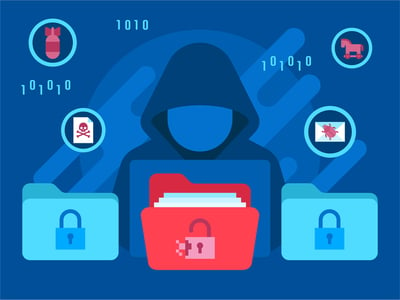 New analysis of cyberattacks shows that organizations aren’t able to properly detect ransomware attacks, resulting in a majority of victims paying the ransom to retrieve data.
New analysis of cyberattacks shows that organizations aren’t able to properly detect ransomware attacks, resulting in a majority of victims paying the ransom to retrieve data.
You might assume that your organization will spot and stop a ransomware attack (or any other cyberattack) using the layered security solutions you have in place. But data found in Databarracks’ Data Health Check 2022 report shows that a large percentage of organizations aren’t truly prepared – from detection, to response.
According to the report:
- 50% of organizations experienced a cyberattack last year, with 3 organizations experiencing over 100 attacks each!
- Only 38% of small businesses believe their IT team possesses sufficient cybersecurity skills, while 71% of large businesses feel the same way
- 43% of small businesses have no business continuity plan and don’t intend on having one!
The really shocking part of this data resides in the data around how ransomware is detected. Ideally, it should be found by email scanners, endpoint protection solutions, etc. But, according to the report, the number one way ransomware is detected (with 36% of the responses) is by users notifying IT that files are encrypted! This surpasses Anti-malware software (10%), anti-ransomware software (2%), honeypots (25%) and network monitoring (26%).
And once the attack is over? Nearly half (44%) of organizations paid the ransom to regain access to their data. Only 34% recovered from backups.
One of the problems I see is that in response to an experienced attack, only 17% of organizations implemented some form of Security Awareness Training, with just over half of those orgs (56%) doing so in the last 6 months. The most effective means of Security Awareness Training is that which is continual in nature, tied with phishing testing to determine where your organization’s weakest link (read: which user) resides.
 Here's how it works:
Here's how it works:




